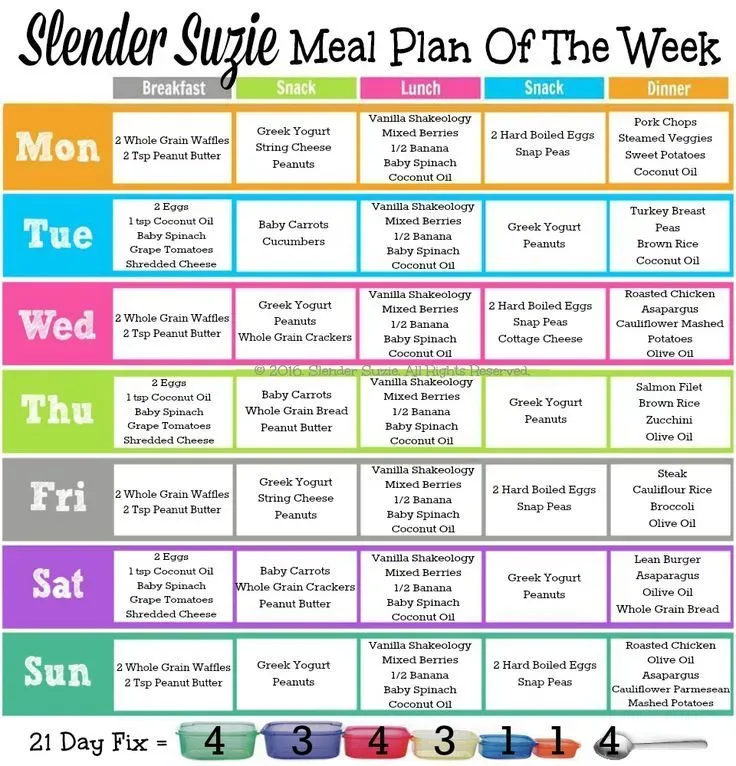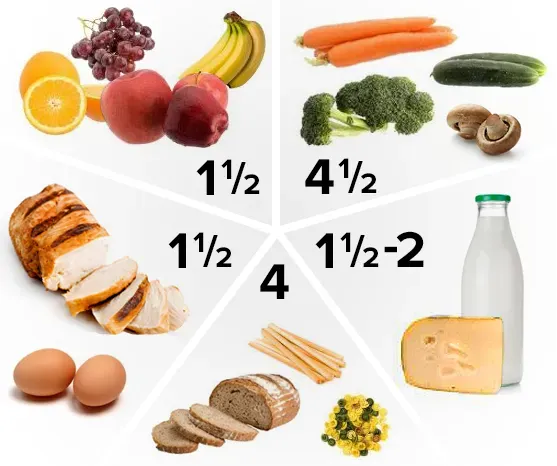Table of Contents
Feeding an 8-year-old can feel like navigating a minefield. One day they're devouring everything in sight, the next they're eyeing broccoli like it's the enemy. It's easy to get stuck in a cycle of convenience foods and negotiation tactics just to get them to eat *something*. But ensuring your child gets the right fuel isn't just about avoiding meltdowns; it's fundamental to their growth, focus in school, and overall well-being. This is where having a solid healthy eating plan for 8 year olds becomes less of a daunting task and more of a practical guide.
Understanding Why a Healthy Eating Plan Matters for Your 8YearOld

Understanding Why a Healthy Eating Plan Matters for Your 8YearOld
Alright, let's cut to the chase. Your 8-year-old isn't just a smaller version of you; they're a rapidly developing human machine, and the fuel you put in dictates how well that machine runs. Thinking about a healthy eating plan for 8 year olds isn't just about hitting some arbitrary calorie count or avoiding junk food 24/7. It's about providing the consistent, nutrient-dense building blocks their bodies and brains desperately need right now. We're talking about powering their growth spurts, fueling their endless energy (or lack thereof, depending on the day), sharpening their focus for schoolwork, and even setting the stage for long-term health. Skip this foundational piece, and you're essentially asking a race car to run on muddy water and hope for the best.
Building the Foundation: Key Food Groups in a Healthy Eating Plan for 8 Year Olds

Building the Foundation: Key Food Groups in a Healthy Eating Plan for 8 Year Olds
Getting Back to Basics: Why Food Groups Matter
so you're trying to figure out this whole healthy eating plan for 8 year olds thing. Where do you even start? Forget the fancy superfoods and complicated rules for a second. It boils down to the basics: food groups. Think of them as the essential departments in your child's body-building factory. Each group brings something unique to the table, and they all need to show up for work regularly. Without enough of each, the whole operation gets shaky. It's not about perfection, but consistency across the board. We're aiming for balance, not a nutritional tightrope act.
Loading Up on the Good Stuff: Fruits and Veggies First
If there's one area where most kids (and let's be honest, many adults) fall short, it's fruits and vegetables. These are the powerhouses packed with vitamins, minerals, and fiber. Fiber is huge – keeps things moving, helps them feel full, and avoids those blood sugar crashes that lead to epic meltdowns. Aim for a rainbow of colors throughout the week. The brighter the color, often the more different nutrients it contains. Getting enough produce into a healthy eating plan for 8 year olds means getting creative. Hide spinach in smoothies? Sure. Serve bell pepper strips with hummus? Absolutely. Keep offering them, even if they get rejected ten times.
- Offer fruit with breakfast (berries on cereal, apple slices with toast).
- Pack veggie sticks (carrots, cucumbers, bell peppers) with lunch.
- Add a side of steamed broccoli or green beans to dinner.
- Blend spinach into fruit smoothies – they often won't taste it.
- Keep a fruit bowl accessible for easy snacking.
Rounding Out the Plate: Grains, Protein, and Dairy/Alternatives
Beyond the produce aisle, you need quality grains, protein, and dairy or their alternatives. For grains, think *whole* grains whenever possible. We're talking whole wheat bread, brown rice, oatmeal, quinoa. These provide sustained energy, unlike refined grains that cause a quick spike and crash. Protein is crucial for muscle growth and feeling satisfied – lean meats, poultry, fish, beans, lentils, eggs, nuts, and seeds. Dairy provides calcium for strong bones, but if dairy isn't an option, fortified plant-based milks and other calcium-rich foods are key. Combining these groups at meals helps create a balanced plate that fuels your 8-year-old effectively.
Sample Meal Ideas: Crafting a Practical Healthy Eating Plan for 8 Year Olds

Sample Meal Ideas: Crafting a Practical Healthy Eating Plan for 8 Year Olds
so you've got the why and the what (food groups), but the real question is, "How does this actually look on a plate?" Talking about a healthy eating plan for 8 year olds in theory is fine, but the rubber meets the road when you're staring into the fridge at 6 AM or trying to pack a lunch that won't get traded for cookies. This isn't about Michelin-star cooking; it's about simple, repeatable meals that cover the bases without demanding a culinary degree or requiring you to become a short-order cook catering to wildly different preferences every single night. We need tangible examples, things you can actually make without wanting to pull your hair out.
- Breakfast: Oatmeal with berries and a sprinkle of nuts; Whole-wheat toast with avocado and an egg; Yogurt with granola and fruit; Whole-grain cereal with milk and a banana.
- Lunch: Turkey and cheese on whole-wheat bread with carrot sticks and an apple; Leftover chicken and rice with a side salad; Hard-boiled egg, cheese cubes, whole-grain crackers, and grapes; Lentil soup with whole-wheat bread.
- Dinner: Baked chicken breast with roasted sweet potatoes and green beans; Salmon with brown rice and broccoli; Beef and vegetable stir-fry with quinoa; Whole-wheat pasta with meat sauce and a side salad; Bean and cheese quesadillas on whole-wheat tortillas with salsa.
Navigating Challenges: Picky Eaters and Snacks in Your 8YearOld's Diet

Navigating Challenges: Picky Eaters and Snacks in Your 8YearOld's Diet
let's get real. You can have the perfect blueprint for a healthy eating plan for 8 year olds, but it all hits a wall when your kid decides that anything green is poison or that snacks are the only reason to live. Picky eating is a rite of passage for many 8-year-olds, a power struggle disguised as dietary preference. And snacks? They're the constant negotiation point, the potential derailers of otherwise decent meal efforts. Ignoring these realities won't make them disappear. You need strategies that go beyond just saying "eat your vegetables" and hoping for a miracle. It requires patience, consistency, and a healthy dose of stubbornness on your part.
Dealing with the "I Don't Like It" Syndrome
- Keep offering new foods, but don't force it. Exposure matters, even if they just touch it.
- Serve foods in different ways (raw, cooked, roasted, pureed).
- Let them help prepare meals; kids are often more willing to try food they helped make.
- Offer one "safe" food you know they'll eat alongside new or less-liked items.
- Model good eating habits yourself – kids watch what you do.
Making it Stick: Tips for Implementing a Healthy Eating Plan for 8 Year Olds

Making it Stick: Tips for Implementing a Healthy Eating Plan for 8 Year Olds
Consistency is King (and Queen and Everything In Between)
Look, crafting a healthy eating plan for 8 year olds on paper is one thing; making it a regular part of life is another. This isn't a diet you start and finish; it's building habits that hopefully last a lifetime. The single biggest factor? Consistency. Kids thrive on routine, even if they fight you on it initially. Offering balanced meals and snacks at predictable times helps regulate their hunger and reduces impulsive grabs for less healthy options. It means you, the parent, need to be the steady hand. Don't get discouraged by one off day or a week of vacation where things went sideways. Just get back to the plan at the next meal. Your persistence chips away at resistance over time.
Involve Them, Don't Just Dictate
Nobody likes being told what to do, especially an 8-year-old flexing their newfound independence. Trying to force a healthy eating plan for 8 year olds *on* them is a recipe for rebellion. Instead, bring them into the process. Let them help pick out new fruits or vegetables at the grocery store. Have them wash produce or stir ingredients. Give them a say in meal planning, offering a choice between two healthy options ("Do you want broccoli or green beans with dinner?"). When they feel some ownership, they're much more likely to cooperate. It turns mealtime from a battleground into a collaborative effort, albeit one where you still hold the veto power.
Simple Ways to Get Kids Involved:
- Let them help write the grocery list.
- Assign simple tasks like washing vegetables or setting the table.
- Have them choose a new recipe to try each week (from a pre-approved list, of course).
- Let them pack their own lunch (with your guidance).
- Grow a small herb or vegetable garden together.
Making the Healthy Eating Plan Stick
So, there you have it. Crafting a healthy eating plan for your 8-year-old isn't about aiming for culinary perfection every single meal. It's about consistency, making informed choices, and accepting that some days will be smoother than others. You'll have wins with new foods and losses with uneaten plates. That's parenting, not a failure. The goal is progress, not perfection. By focusing on balanced meals, smart snacks, and involving your child where you can, you're setting them up with habits that extend far beyond the dinner table. It's less about forcing compliance and more about building a foundation for a lifetime of better health choices. It takes effort, sure, but watching them thrive makes the occasional veggie stand-off worth it.